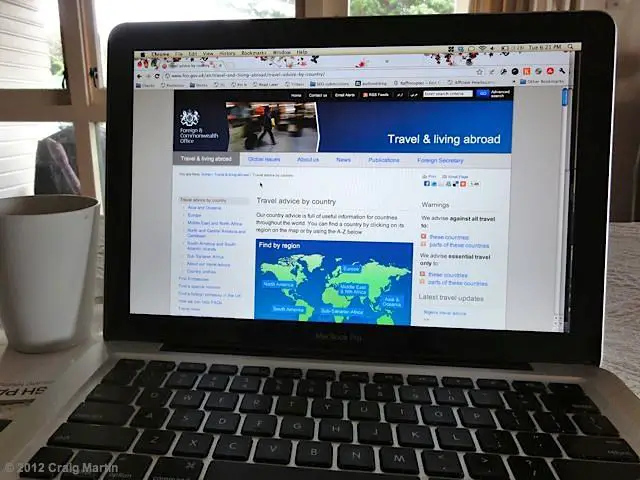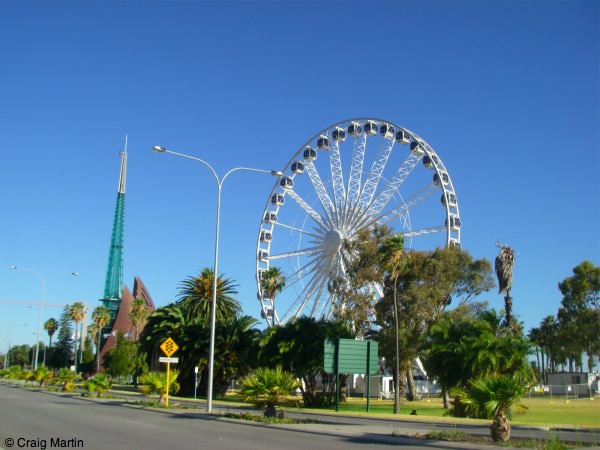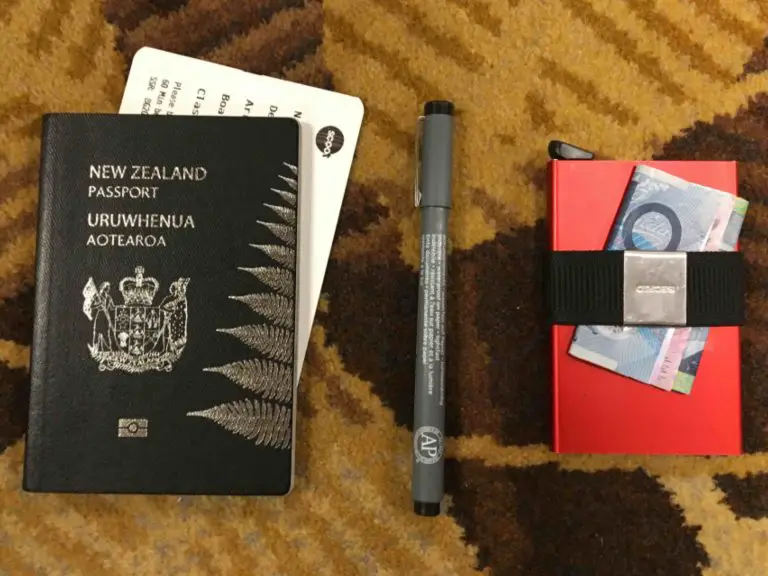Best electronics to take travelling podcast
What are the best electronics to take travelling? Should you take your laptop on the road? How about an iPad? A Kindle? A DSLR camera? We explore the best electronics to carry with you, right down to our recommended brands and models.
To listen, hit play below or find episode 236 in iTunes or Soundcloud:
Lighter is better
Whenever we talking about packing for travel, pack light is the most valuable advice we can give. Since electronics weigh so much, this is a great area to get under control… and it’ll save you some stress about theft, and some money on travel insurance too.
The number one question for any piece of electronics you’re going to carry is What’s the point? Does it fill a great need, or can it be left behind. If you’re not going to use it five days a week, let it lie. With the exception of a first aid kit, you should only take things you’ll use often.
Camera
Unless you’re at the point where you’ve exhausted the artistic expression you can squeeze out of a ‘normal’ point and shoot, there’s no point carrying a heavy, expensive DSLR and lens kit with you. If you shoot photos on automatic, stick with a point and shoot!
We use a point and shoot: the Sony Cyber-shot DSC-HX5V and that powers many of the photos on this site. If you think they’re good enough, then that camera will do the trick for you. It also has a built-in GPS (so you can remember where you took that shot!) and a nifty panoramic mode.
Travel bloggers Dave Dean and Jodi Ettenberg use a micro four-thirds Olympus PEN E-PL3. A Micro Four Thirds camera has removable lenses, just like a DSLR, but is normally a third of the size. It’s a good half-way between a point and shoot, and a full-sized camera.
Unless you’re a pro or a true hobbyist, we advise against taking a DSLR travelling. They’re big, they’re heavy, they’re impossible to hide away, and they’re expensive to replace or to insure. Leave it behind (and if you haven’t touched it in 12 months, sell it to pay for your plane tickets).
We have some great travel photography resources here — for you with the point-and-shoot, and you with the DSLR too.
Smart phone
If all you’re doing with photos is uploading them to Facebook, perhaps all you need is a new-model smartphone. This is a piece of electronics we’d recommend taking with you. It’s:
- Useful in emergencies.
- Small enough to slip into a pocket, or bury in a backpack.
- Has wifi and mobile data for communication, sharing, and trip research.
- Can make calls if you can’t book online.
- Has a GPS to help you find your way around.
- Has a digital compass to orient yourself as you come out of the subway.
- Guides don’t make you look like a tourist; unlike your Lonely Planet or tourist map.
- Can keep you entertained with movies, podcasts, music and ebooks.
The one problem is that you shouldn’t use it to squish insects… Something that a traditional guidebook is great at.
We’d recommend checking out:
The iPhone
At present, the iPhone 4s is the latest iteration, and still has the easiest-to-use interface. Apple has a worldwide guarantee and service agreements, so you’re covered there as well. We use an iPhone 4 and an iPod Touch… We’ll be staying in the iPhone family for future upgrades at present, and would recommend new buyers head straight for the iPhone 4s.
Nokia Lumix series
The Nokia Lumix is bringing Microsoft Windows back into the smartphone market. Worth a play, but Window’s smaller market share means it’s still going to be under-supported by third-party app makers. The Nokia Lumia 800 and Nokia Lumia 900 4G
look gorgeous.
Android
Android is the second-biggest player in the smartphone (and tablet) market after Apple. What sets them apart, is that the Android operating system works on phones from many different manufacturers — and all those manufacturers make changes to the system so they work best with their hardware. We’re not up to date on the Android market, but have had a play on the HTC Dream and Inspire. I’d check out the best-selling unlocked smartphones on Amazon as well as dropping into a store to see what might work for you.
An important note on phones!
Make sure your phone works worldwide, by seeing if it supports the full range of GSM bands. If you want to buy local SIM cards (which you most-probably will to save hundreds of dollars on SMS, phone and data charges), make sure it’s unlocked as well. If that’s all greek to you, find a geek to double-check what you’re wanting to buy against your destination’s network technology.
Tablet, netbook or laptop
These are all useful tools, and are more efficient than a smartphone for any kind of large-scale writing, or even for researching flights and train timetables… those websites are always a real pain on a small screen. However, they fall under the same umbrella as a DSLR. How many times will you use it? An hour or two each day? Bring it along. Once a week? Use an internet café, or a connection at your hostel or hotel.
If you’re going to bring one, bring one. Couples can get away with having a laptop and a tablet, but if you’re travelling solo one is enough. Probably the lighter one!
We recommend: the Macbook Air 11″
This is getting a little Apple-fanboyish, but these are amazing travel laptops. They’re light, strong, fast, easy to hide away, and ours fits into about 75% of hotel-room safes. That’s good going! The cheapest version of the MacBook Air is under a grand, and will last for years. Linda’s is 18 months+ and still fires up in seconds.
Do you have a favourite laptop for travel? Or a tablet? We haven’t played with a lot, so please let us know in the comments.
Connectivity
A device without an internet connection isn’t much good. Luckily in much of the world, free wifi is the norm — at least if you buy a drink. Make use of that, and check your accommodation is doing the decent thing and providing it for free or a small, all-you-can-eat surcharge.
A local SIM card won’t cost much, and there are some great pre-paid packages available for text as well as data. Here in Spain I get 50 texts and 100mb of data for about €4 a week, and I seldom burn through that in addition to wifi at home and out and about.
Companies like Droam are introducing a new model for mobile data: hire their little keyring-sized device and get wifi at a standard rate internationally. One price: no price hikes or surprise bills. I love the idea… I just wish major carriers started pricing like this.
What about backups?
One of the main reason people carry computers while they travel is to back up their photos. And that’s vital!
We carry several hard-drives to deal with all the photos, video, podcasts and other client data we burn through each month. But I wouldn’t recommend that. SD cards are now cheap enough to replace that option for most people.
Buy two 8- or 16-gig SD cards and copy your photos to both of these each day, or each week. Keep one copy on you, and one — safely locked away — at your accommodation. When they fill up, post one home and keep one on you.
There are some great online backup providers — we use Mozy.com — but you’re limited by the speed of your internet; and 500 photos of Angkor Wat are going to take months to upload while you’re in Cambodia. Not recommended unless you desperately need the redundancy.
Kindle
After all this talk about eliminating “extra” devices, I don’t think we will ever travel without an e-reader again. The Kindle has knocked down the amount of books Linda carries from 15+ to three or four… and that’s something!
We’re voracious readers: both on over 50 books read this year. Even if you’re not so book-crazy, the Kindle is a great replacement to your book collection, and also allows you (basic, slow) 3G internet access for checking your couchsurfing requests, booking accommodation on the bus when you realise there’s a festival on in your destination, or you need a phrasebook now because you and your host can’t understand each other. Yep… those are real user studies from the turn-up-and-see-what-happens world of indie travel.
There’s the Keyboard, the Touch, and Fire. Whatever you get, the 3G version without ads is the best. We have two of the Kindle Keyboard 3G models (even if one is stuck in New Zealand right now).
Is it safe to bring expensive electronics with me?
No, not really.
Well, yes… Kind of.
The chance of you having stuff stolen isn’t much greater than at home. Since 2006 we’ve had two pieces of electronics stolen: pick-pocketed from an unlocked bag on a busy day. We’ve never had anything stolen from our accommodation, or had our most valuable gear (our laptops) stolen. 99% of people we talk to have no problems: travel is generally safe.
Whatever you decide to bring, make sure your insurance covers it. You can read more about travel insurance here.
To listen, hit play above or check in iTunes, Stitcher or Soundcloud.
We’ve shown you ours…
What brands do you love? What do you travel with? Are you using a tablet over a laptop? What’s the best camera? What are your questions? Hit the comments!






